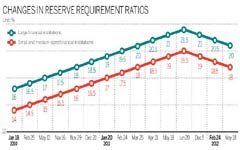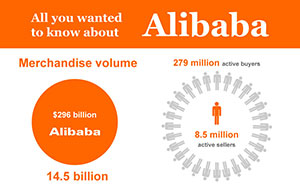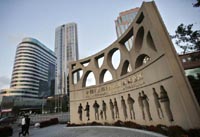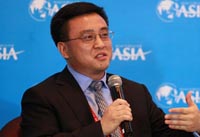Central bank advisor stresses prudent policy, not time for rate cut
(Xinhua) Updated: 2014-09-18 13:13
 |
 |
Although China currently faces relatively high downward pressure, it is the most hopeful moment for restructuring the economy, as well as the last opportunity, Chen, who sits on the committee, said in an interview.
"China will continue with prudent monetary policy to keep an overall stable financial environment," Chen said, ruling out the possibility of a strong stimulus.
In response to the question on whether China will cut interest rate to bolster growth, he said it is not yet time to determine that.
Cutting interest rate is a strong signal that will cause concerns and confusion in the market, Chen noted. "We will not resort to that move as long as we have other choices".
He pointed to targeted cuts in bank reserve requirement ratio and open market operations as options for the policy tools.
After a shaky start this year, Chinese policymakers have pinned hopes on quickening fiscal spending and selective easing of monetary policies to support faltering growth.
The government has put more focus on optimizing credit structure by guiding more credit flow into the agriculture sector and small businesses against the backdrop of prudent monetary policy.
Helped in part by these efforts, China's economic growth showed recovery signs in the second quarter, accelerating to 7.5 percent from the 7.4-percent expansion in the first quarter.
However, over the weekend a string of key economic indicators fell below market expectations that pointed to slowing momentum in recovery.
China's value-added industrial output decelerated sharply to 6.9 percent year-on-year in August, down from 9-percent growth in July, further signs of softening strength in the economy.
In view of the sluggish activity, the market has been expecting further monetary policy easing. On Wednesday, it was reported the central bank will provide 500 billion yuan ($81.3 billion) to five banks with a tenor of three months via the SLF (Standing Loan Facility).
Although the move has not been officially confirmed, analysts said if true, the choice of using the short-term SLF rather than an across-the-board rate cut reflects that the central bank still has a variety of policy instruments that can be used to support economic activity.
"As risks to growth are still on the downside and high borrowing cost remains a significant constraint on growth, we expect the central bank to continue with quantitative easing measures in the coming months," said a report from HSBC Global Research.
But should these efforts are not as effective as hopes, a rate cut will still be an option toward year end or early next year, the report added.
- 7 Chinese cities that still restrict home buying
- Central bank advisor stresses prudent policy, not time for rate cut
- BYD G5 hits market with connectivity
- Apple to unveil new iPads, operating system on Oct 21: report
- New momentum over China-Singapore economic corridor
- Home prices decline in most Chinese cities in August
- China's high-growth aviation gains global concerns
- Cambodian telecom firm cooperates with Huawei to build 4G network

















